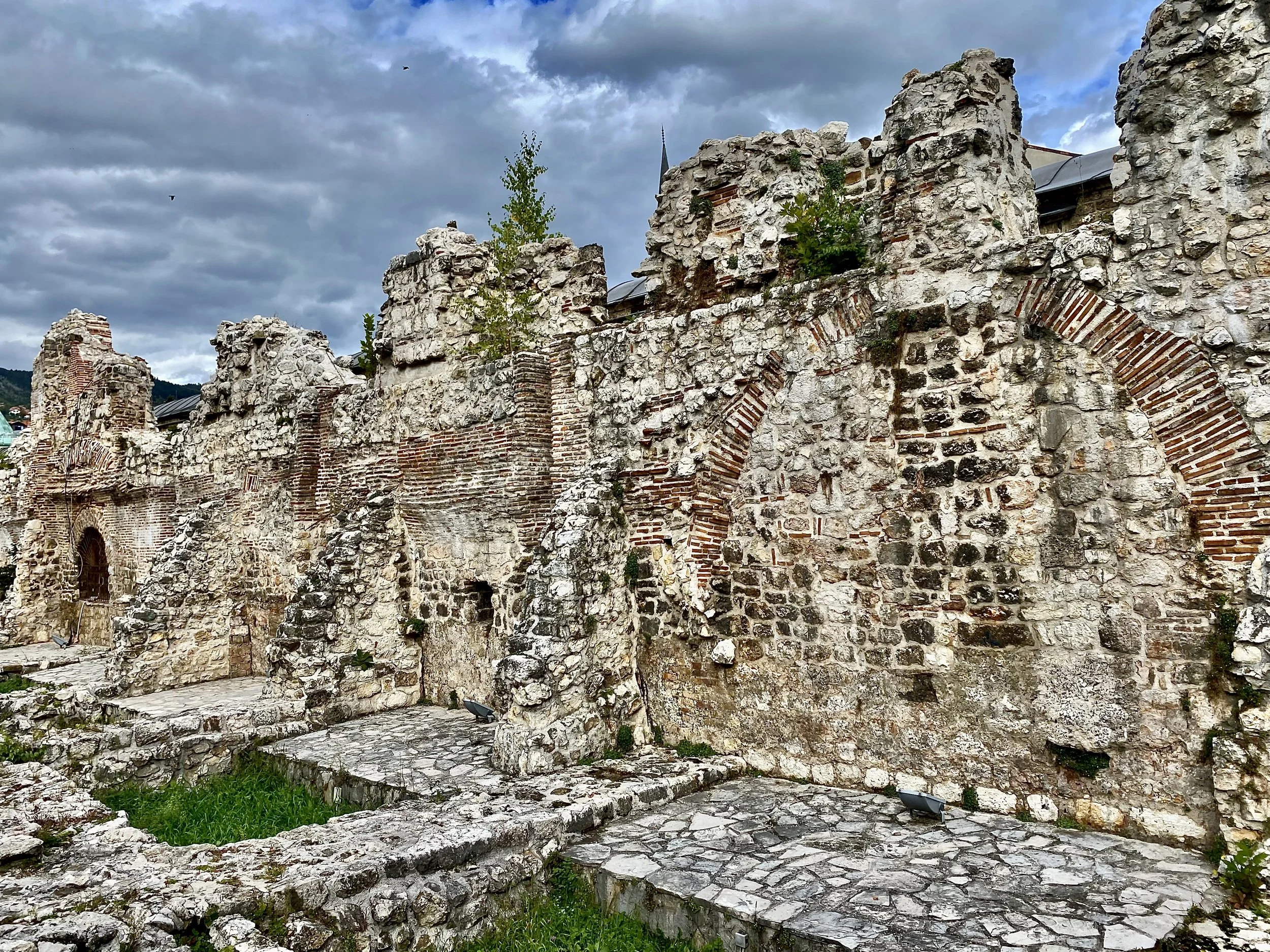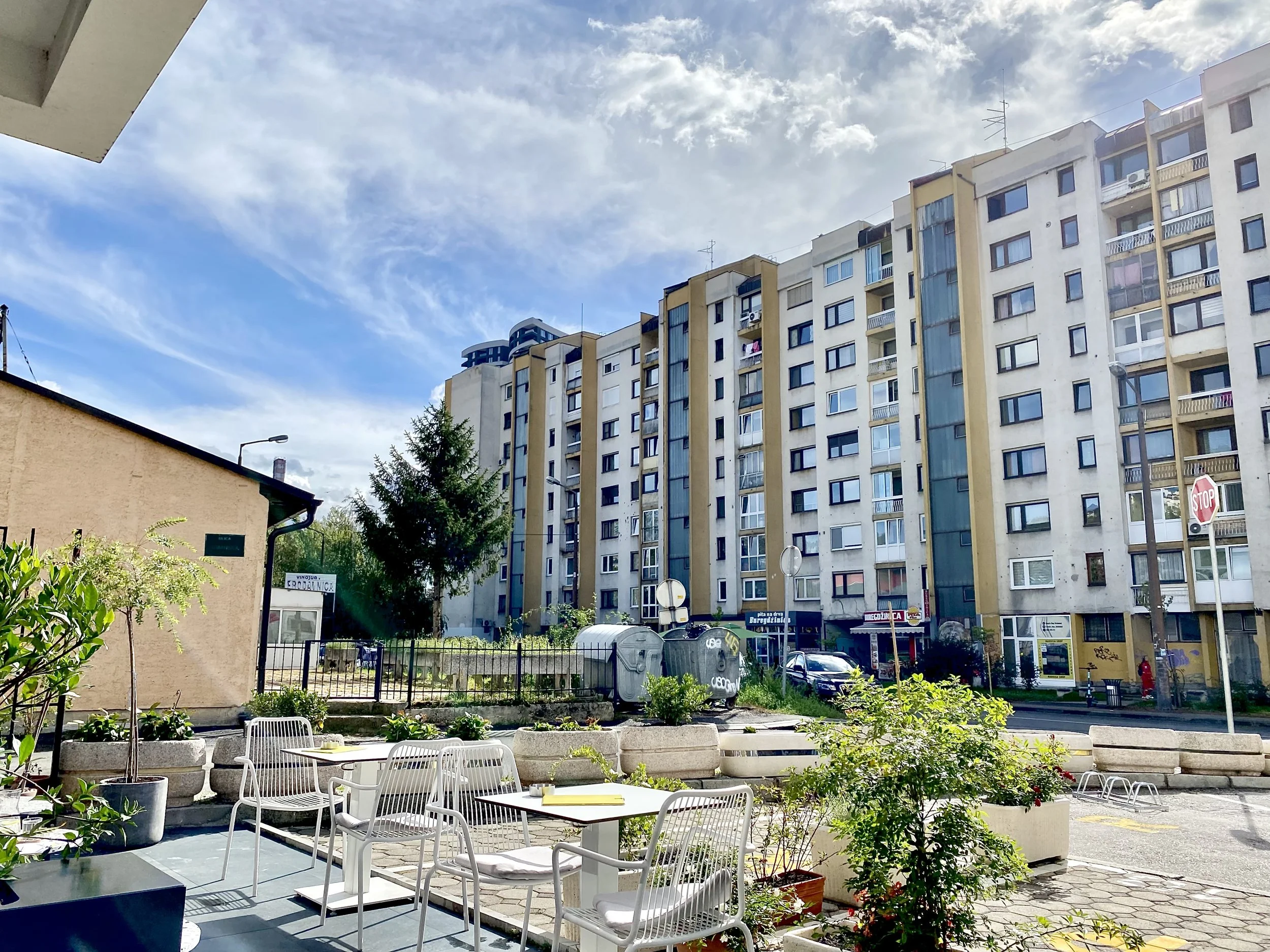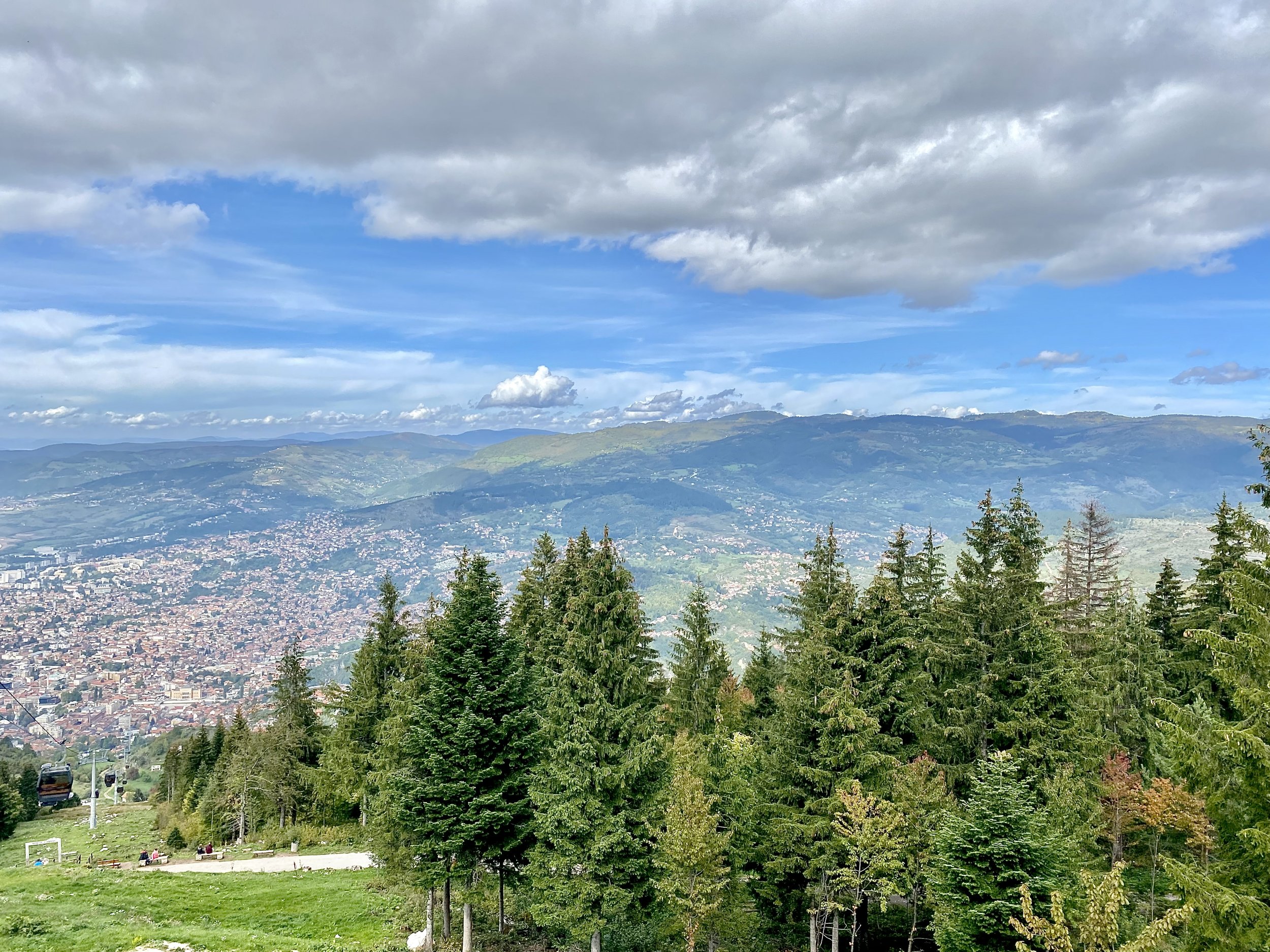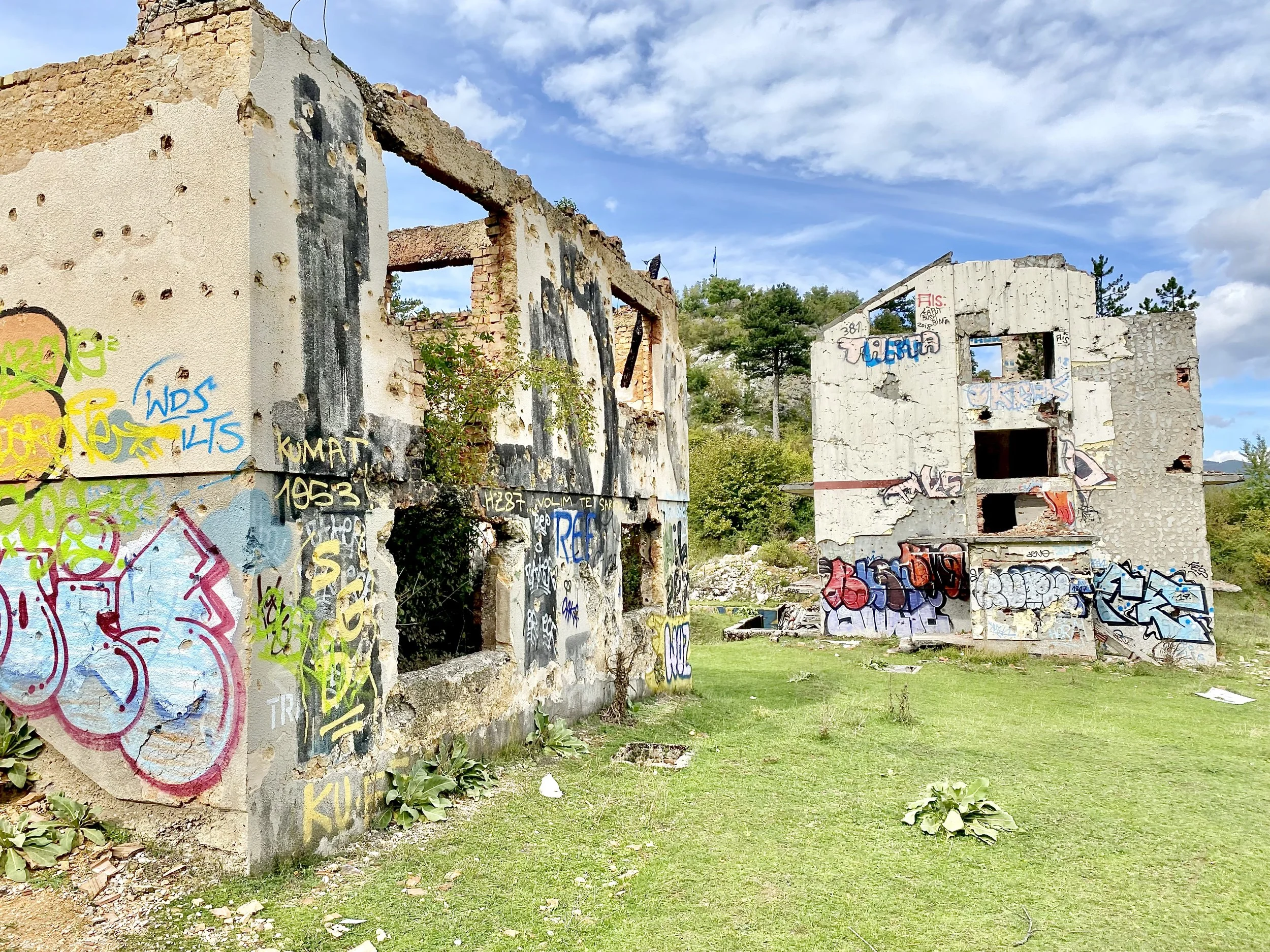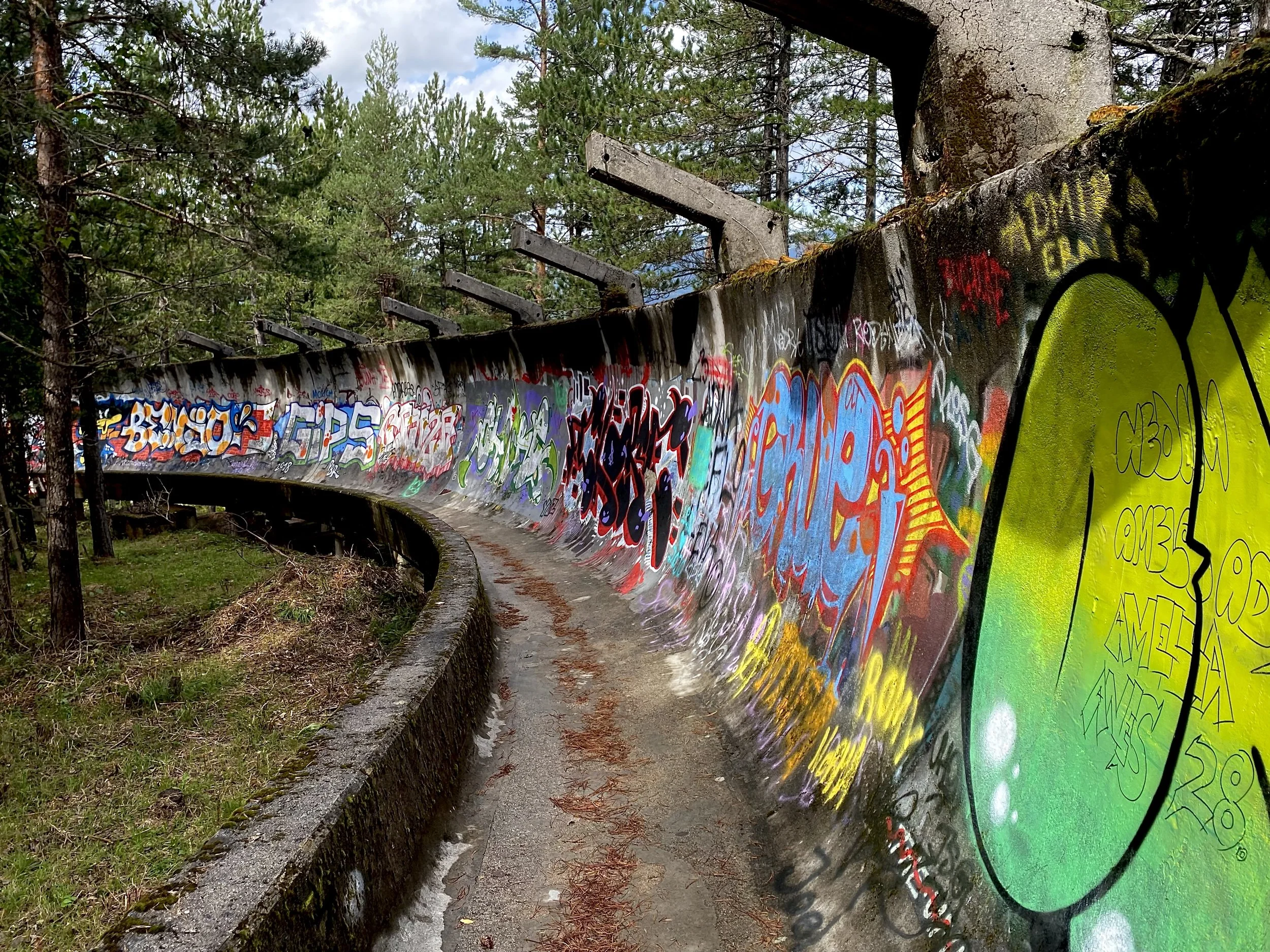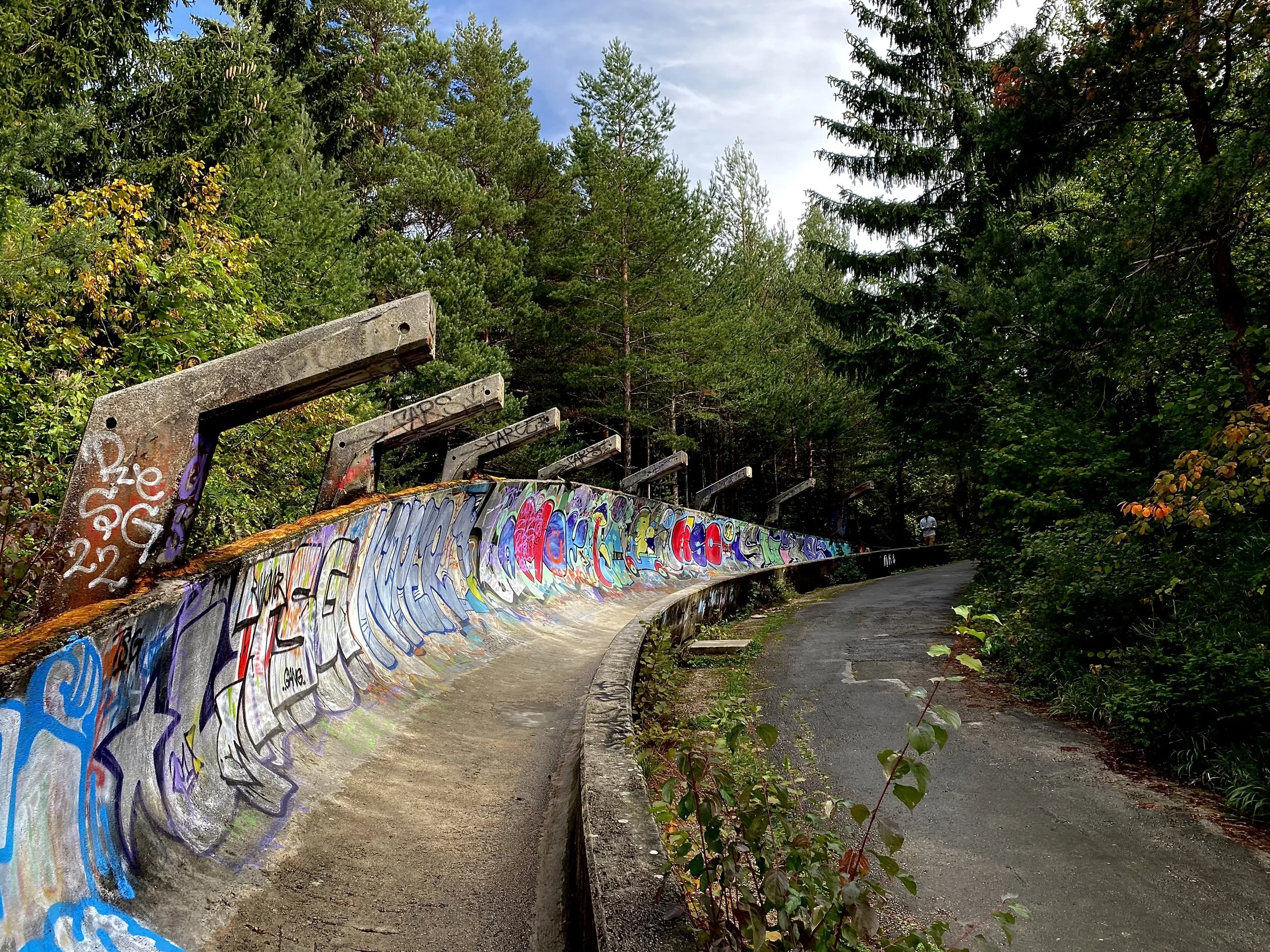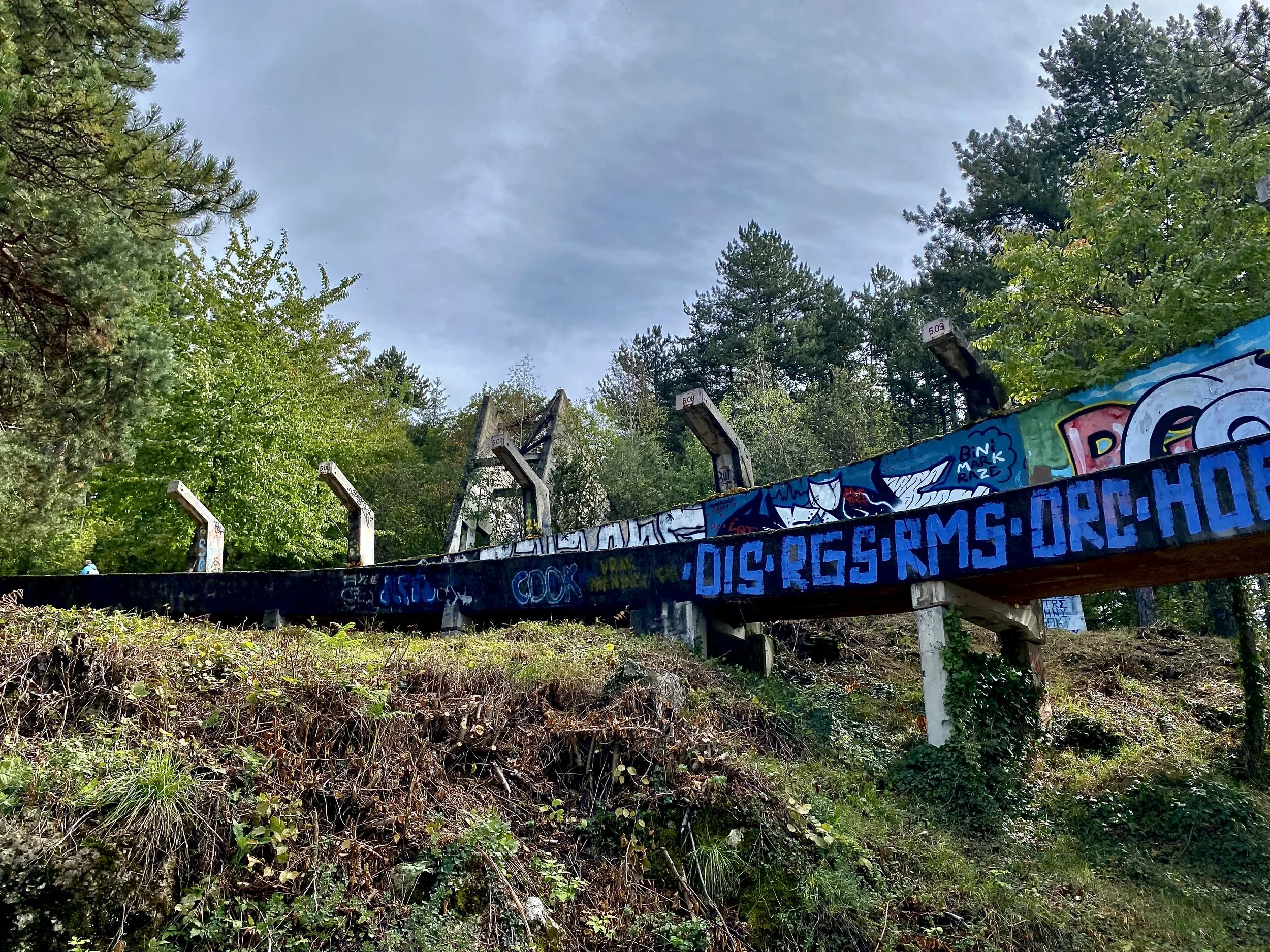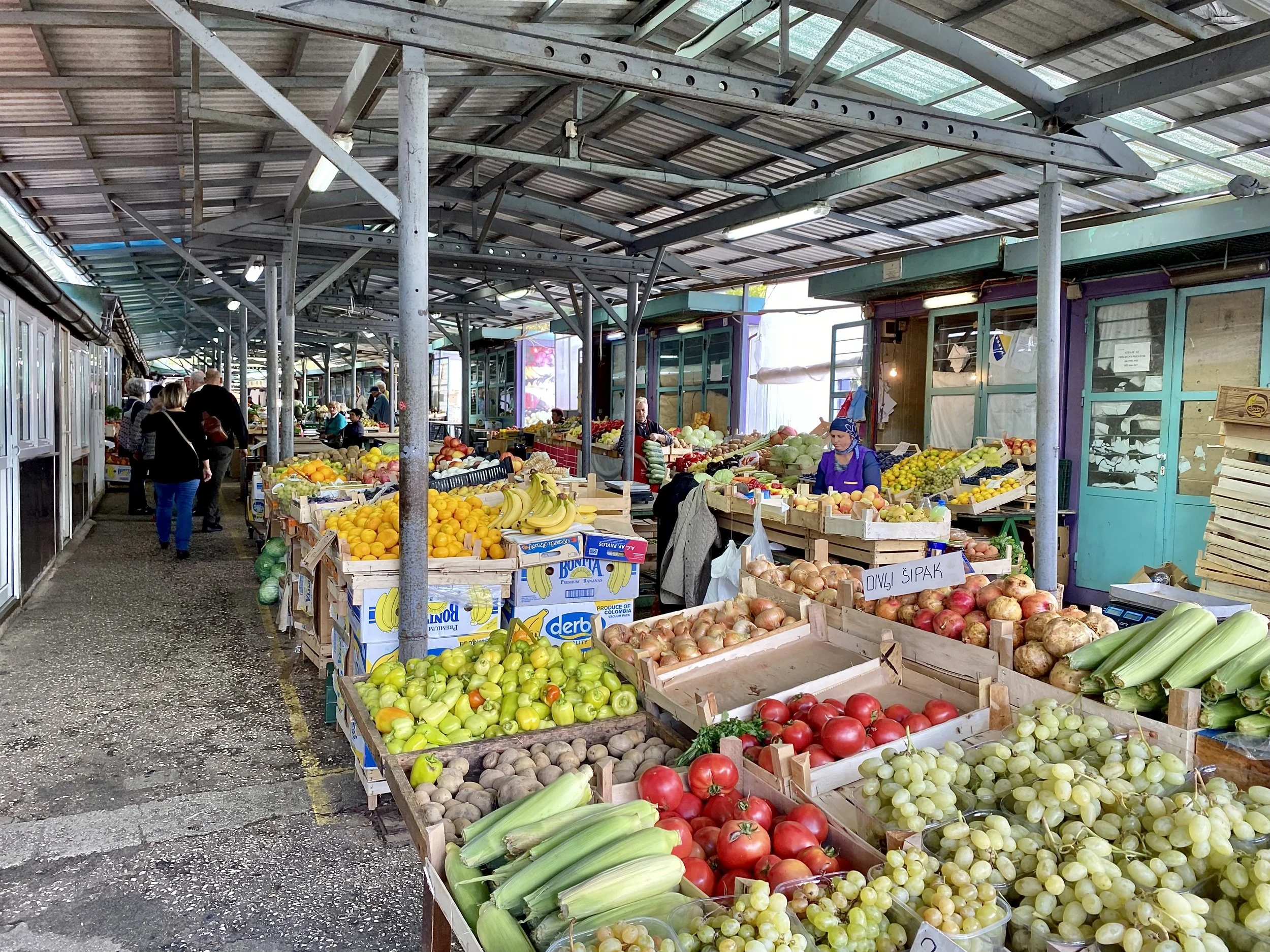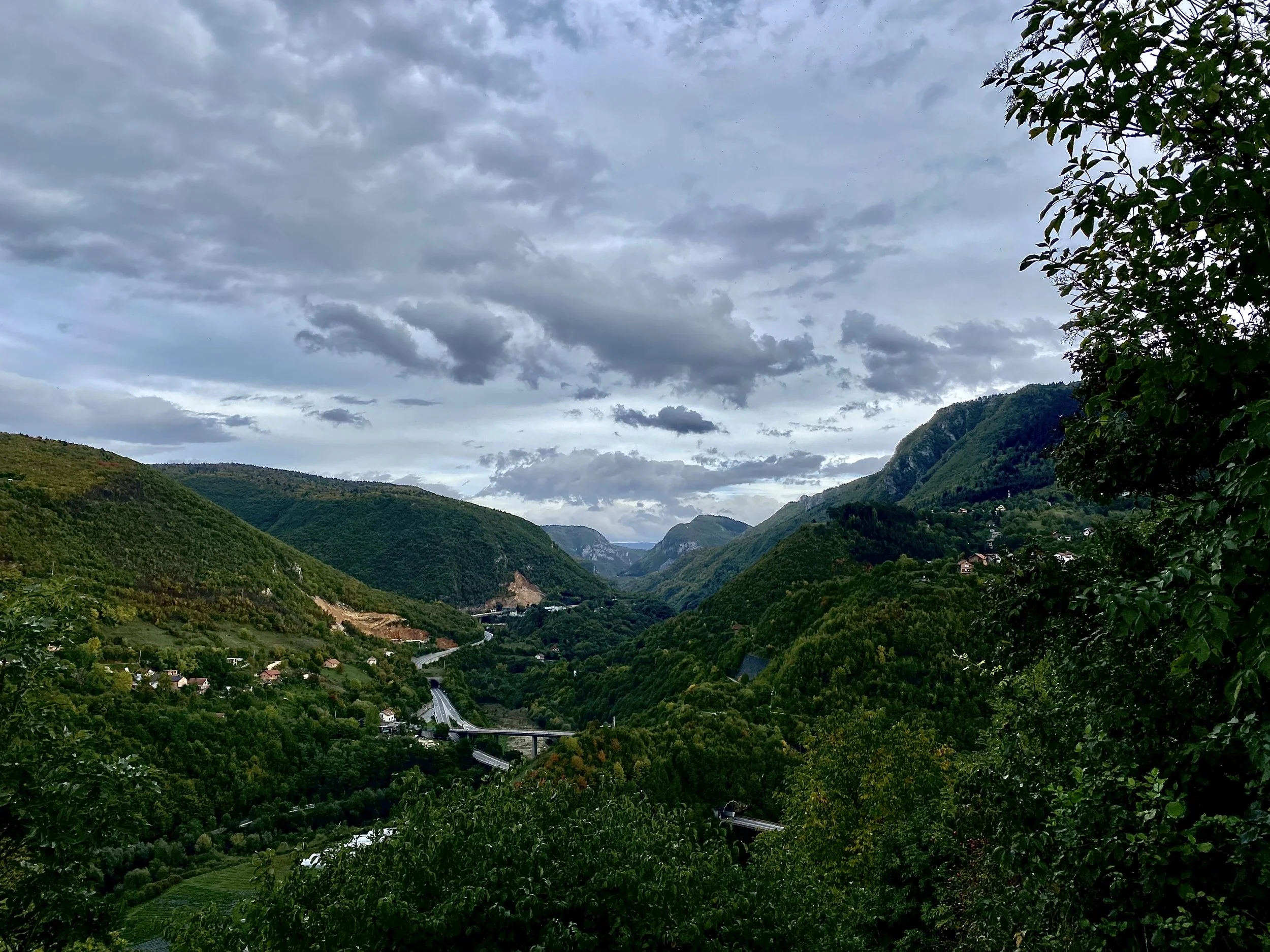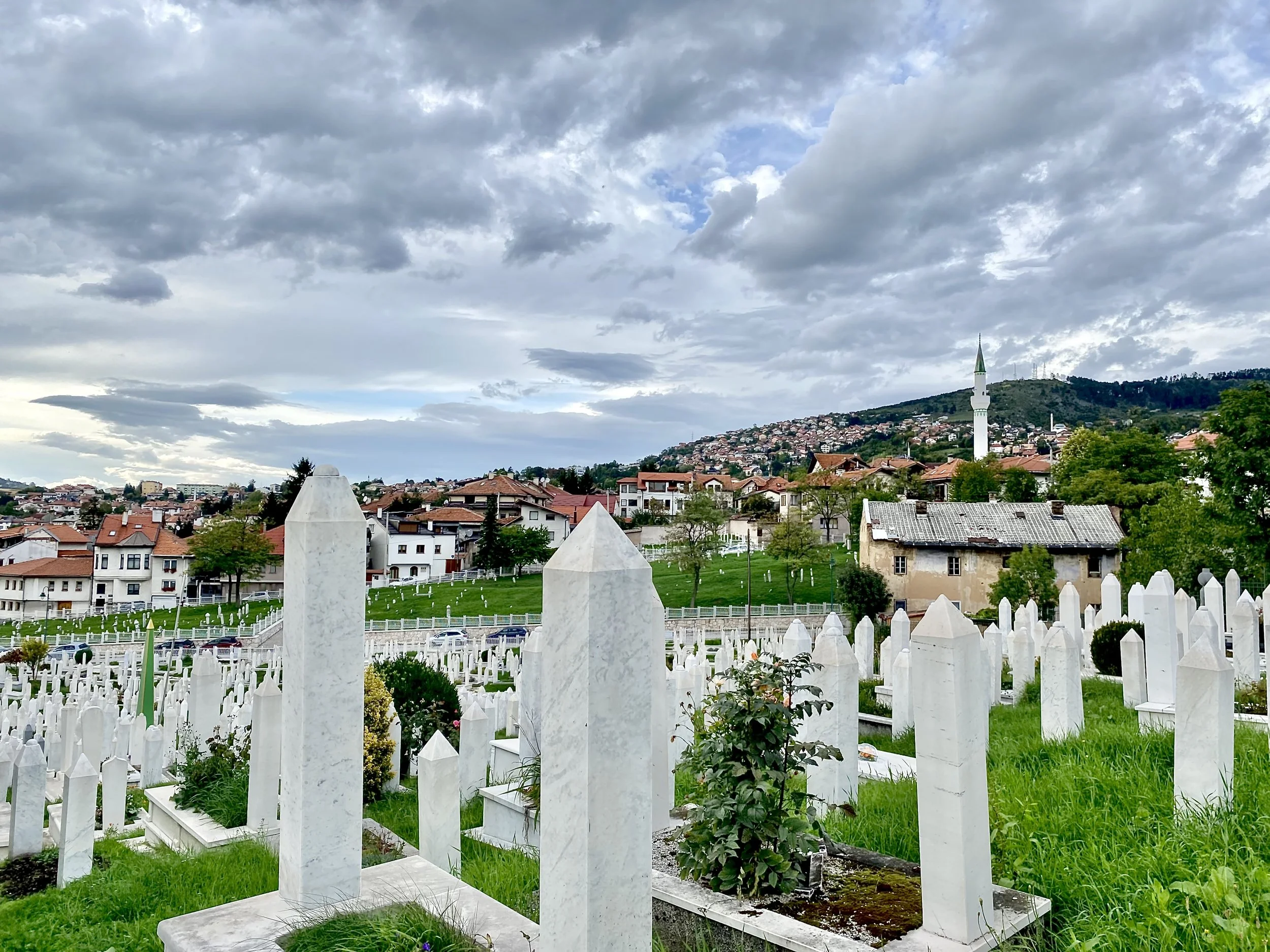Sarajevo is a Living History Museum
A CITY TO SEE THE FULL SCOPE OF BOSNIAN HISTORY
I had a great time in Sarajevo - so much so that I considered extending my stay past three nights. I probably would have . . . But I had made the mistake of pre-booking my next bus. When I sat down to write this city up, though, I had trouble understanding why. Part of it was that I had a really nice apartment - but the larger part was that Sarajevo was just a cool city to experience.
The capital and largest city of Bosnia, Sarajevo is a city that openly wears its history - a place you can come to understand by walking around even without a tour guide. You can experience its Ottoman era walking through its bazaar, its Austrian-Hungarian era in its city center, or see relics of the Bosnian War on the streets and the abandoned buildings. I don’t think any one thing in Sarajevo is truly remarkable - but when put together, the city leaves quite an impression.
WALK THROUGH HISTORY - EAST TO WEST
I think one of the coolest parts of Sarajevo is that its historical districts are geographically segregated and kept fairly separate - allowing you to experience its different periods one by one.
You can start in the Old Town (Bascarsija) and feel its Ottoman period as you shop its bazaar. In this area, you can have some baklava, Bosnian coffee, and explore the local mosques.
As you continue walking west, you’ll soon find yourself in Centar - the center city section built up during Austrian-Hungarian rule; here, you’ll find more stately buildings (such as the Sacred Heart Cathedral, the Orthodox Metropolis, the Sarajevo National Theater, and several museums), modern shopping and dining - as well as landscaped parks typical of the the Austrian-Hungarian Empire. If you head a bit south to the river, you will see the Latin Bridge where the Arch Duke Ferdinand was assassinated - the event that started World War I and led to the end of the Austrian-Hungarian Empire. As is the case throughout Bosnia, you might even find a group watching / playing one of the large public chess boards in Park Oslobodenja.
If you head a bit more west, you’ll find yourself in Novo Sarajevo - New Sarajevo - a section built up during the Socialist Yugoslavian regime - as well as more recently. Here, you’ll find brutalist socialist architecture - depressing block building apartments - as well as more modern shopping malls and glass buildings.
Throughout the city, be on the lookout for “Sarajevo Roses” - damaged sections of asphalt from mortar explosions during the Bosnian War that were filled in with red resin as a small token of remembrance. This is by no means the extent of the history on display in Sarajevo, and I’ll cover more in the next sections, but this single continuous walk will show you a lot about the development of the city.
GO TO THE TOP OF MOUNT TREBEVIC
Mount Trebevic is the most commonly hiked mountain for views of the city. There is a hiking trail that begins here (44°40'01.1"N 16°03'36.6"E); it’s a bit of a steep hike that I don’t recommend taking if it has rained recently (a mistake I made). Alternatively, you can walk up some paved roads (using Google Maps directions) or take the cable car up. The top offers some stunning panoramic views - and some ruins to explore. Be sure to head to the cafe on the roof of the cable car building for the highest views, and to snap a picture in the kitschy wooden photo frames in the various view points.
WALK ALONG THE ABANDONED BOBSLED Track
I think the most unique experience of Sarajevo is walking along the abandoned bobsled track - a relic of the 1984 Olympic Games, an event that brought a period of prosperity to the city before the war. The bobsled track has been covered in street art and has started to be reclaimed by nature - making it really fun to explore (and eerily sublime). You’ll find the track just down from the peak of Mount Trebevic, or along the walk up.
OTHER THINGS TO DO
There’s no shortage of things to do in Sarajevo - and I definitely did not get through them all. Here are some of the other common to-dos:
Walk Through the Jewish Cemetary: Before WW2, Sarajevo had a small Jewish Quarter in Old Town. 85% of the population was murdered by the Nazi Regime and little evidence of the quarter was left intact. You can explore the Jewish history and honor their memory in the Old Jewish Cemetary - the second-largest Jewish sepulchral complex in Europe.
Walk the Sarajevo War Tunnel: During the Bosnian War, Sarajevo suffered the longest siege in modern warfare - 1,425 days, from April 1992 to February 1996. The Sarajevo Tunnel was built under the airport to allow for the flow of goods and people - and has now been made into a museum.
Search for Mountain Views: Sarajevo is surrounded by stunning mountains, so you can always find a good view of them. One of the most common places to go is the Yellow Fortress which has a great location to watch the sunset.
Shop in a Market: Pijaca Ciglane is a large partially covered market in north Centar that sells clothing and produce. It’s the best place I found in the city to buy fruits and vegetables - and it’s the best place to go if you were looking for cheap clothing.
Explore the “Bosnian Pyramids”: North of Sarajevo, in Visoko, there is a set of flatiron mountains known as the Bosnian pyramids. While I didn’t go to them, what I found fascinating is that a pseudo-archaeologist has convinced large swaths of people that they’re actually man-built pyramids under the grass - the oldest and largest pyramids of the world. It’s been proven false, but there are people who go to the “pyramids” for spiritual retreats. From the pictures, they do look cool, though.
There’s a lot to do in Sarajevo and you probably won’t hit it all in a few days unless you’re on a guided tour. Be choosy about what you want to do - leaving plenty of time to just admire wherever you are.


